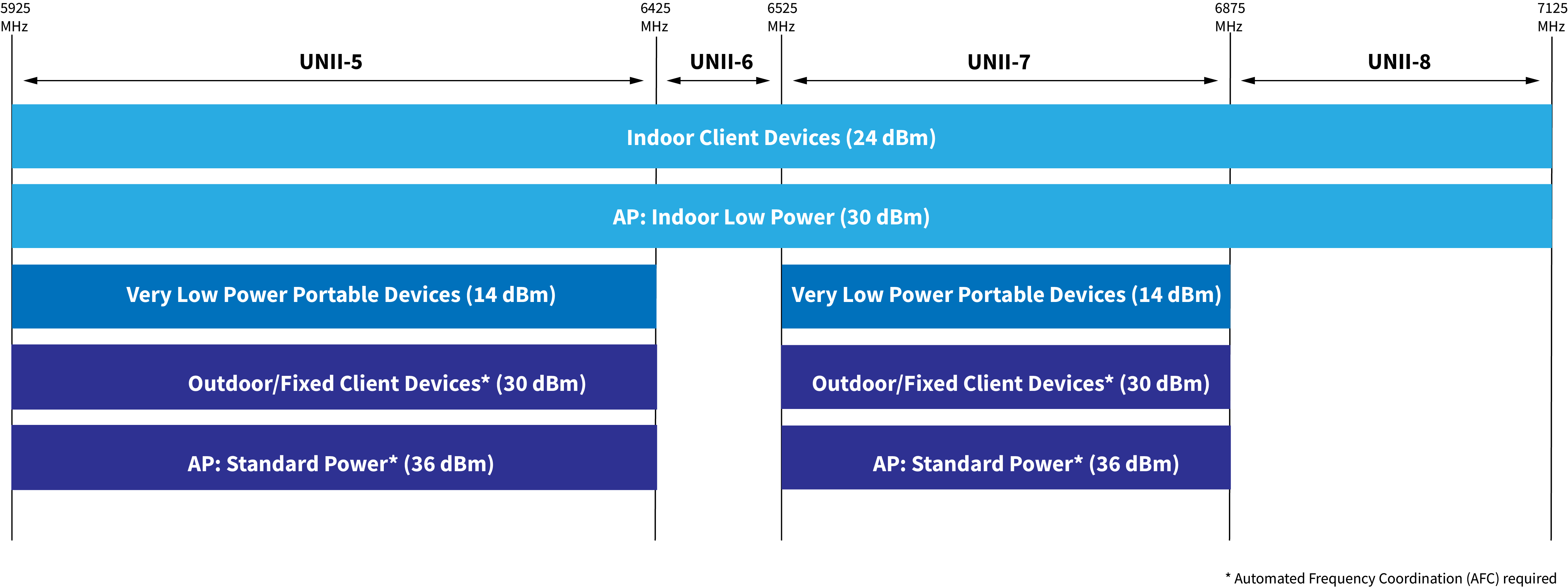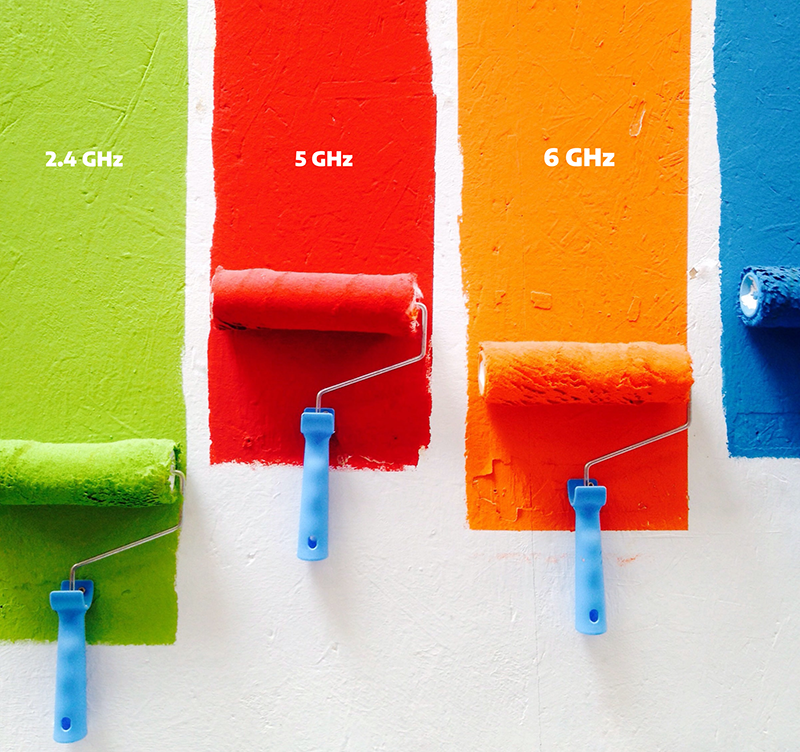In the never-ending quest to find more spectrum, 6 GHz can look like the promised land of plenty. Many vendors are touting it as the next big thing. But does it live up to the hype?
The first thing to understand is the spectrum itself. Many countries are evaluating opening 6 GHz around the world. For the purposes of this blog, we’ll use the US as our example. Other regulatory bodies may choose to adopt different methods and standards.
In 2020, the FCC adopted the proposal to open 1200 MHz of spectrum in the 6 GHz band from 5925 MHz – 7125 MHz or UNII-5 through UNII-8 bands. For comparison, the original 2.4 GHz unlicensed band encompasses 72 MHz of spectrum. The 5 GHz band is a total of 515 MHz. With 6 GHz, the FCC is opening up over twice as much spectrum as both 2.4 GHz and 5 GHz combined.
Who and What Can Use 6 GHz?
First of all, the entire 1200 MHz of spectrum is not treated equally. Use of each UNII band will depend on the type of device. Indoor devices (low power) can use the entire 1200 MHz. Outdoor operations, however, are restricted to UNII-5 and UNII-7 — or a total of 850 MHz.

Figure 1: Unlicensed use of the 6 GHz spectrum by the FCC
The reason for the discrepancy is because there are already incumbents in the 6 GHz band whose operations may be interfered with by newcomers, which is a no-no. This includes microwave and fixed satellite services and radio astronomy. To limit the potential for interference, the FCC has introduced power limits for standard power devices which includes any outdoor device, both APs and fixed clients.
Standard Power Requirements
Another requirement for standard power devices is they must use an Automated Frequency Coordination (AFC) server. This is similar to the Spectrum Access System (SAS) used by Citizens Band Radio Service (CBRS). The idea is that, whenever a standard power device wants to come up, it must contact an AFC and provide information such as antenna height and geolocation coordinates. The AFC will compare this to a list of incumbents and their locations provided by the FCC (via the Universal Licensing System or ULS) and send the device a list of permitted frequencies and power levels. AFC syncs with the FCC’s database of incumbents on a daily basis to maintain accurate information. All standard power devices must, therefore, check with the AFC on a daily basis to ensure they are not causing harmful interference to protected incumbents.
When Will AFC Be Available?
The deadline for companies wishing to operate an AFC was November 30th of 2021. This first round included 14 organizations, from current SAS operators like Federated Wireless, Google, and CommScope, to vendors like Nokia and Broadcom and even industry organizations such as the Wi-Fi Alliance (WFA) and Wireless Broadband Alliance (WBA). The onus is now on the FCC to evaluate each application and issue approvals for AFC services to commence. Until there are approved AFCs, any usage of the 6 GHz spectrum today must stay within the low power requirements. Commercial AFCs are not expected to be available until the second half of 2022 or 2023.
How Much Interference Should I Expect?
One thing to understand about standard power 6 GHz operation: anyone can use the spectrum, assuming there is no conflict with an incumbent. AFCs exist to prevent interference with protected incumbents but will do nothing to prevent unlicensed users from interfering with each other. Just like with 2.4 GHz and 5 GHz, interference can and will be a concern for operators. The expectation is that the spectrum will be relatively “clean” to begin with and become more crowded and noisier as time goes on.
At Tarana, we believe 6 GHz is an important tool for operators and will leverage field-proven innovations like interference elimination to help make the most of this valuable resource. Indeed, as the popularity of 6 GHz grows, the need to manage and eliminate harmful interference will only become more important rather than less so.
If you just can’t wait to learn more, check out our other blogs or some of our favorite customer links. Or reach out to us at info@taranawireless.com. We’d love to hear from you.


